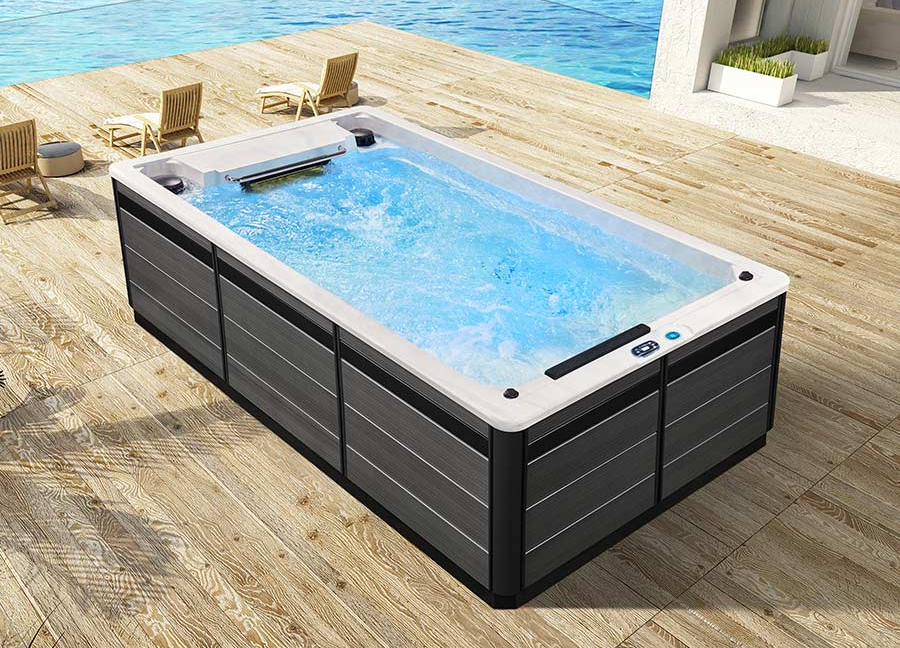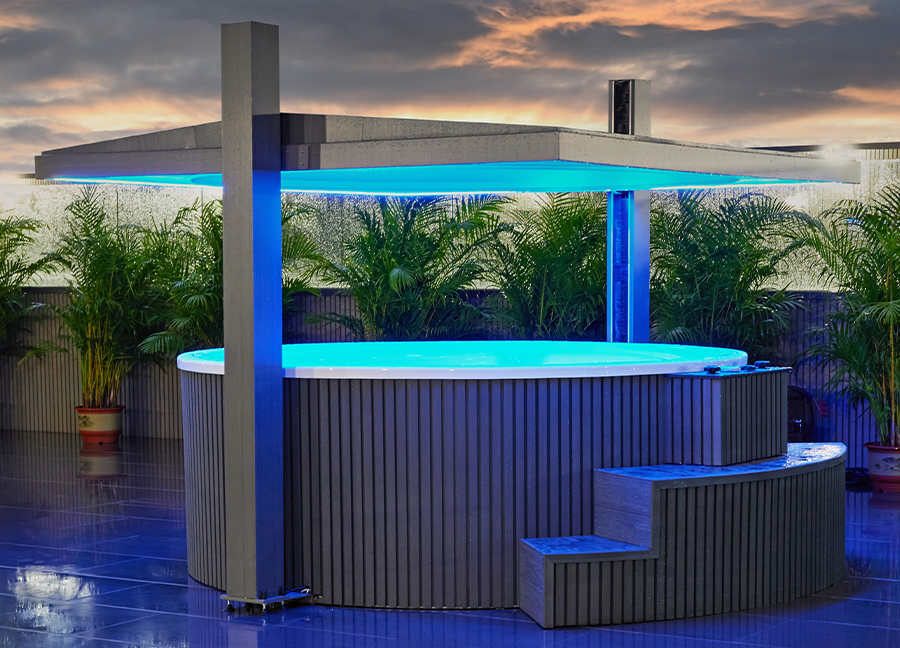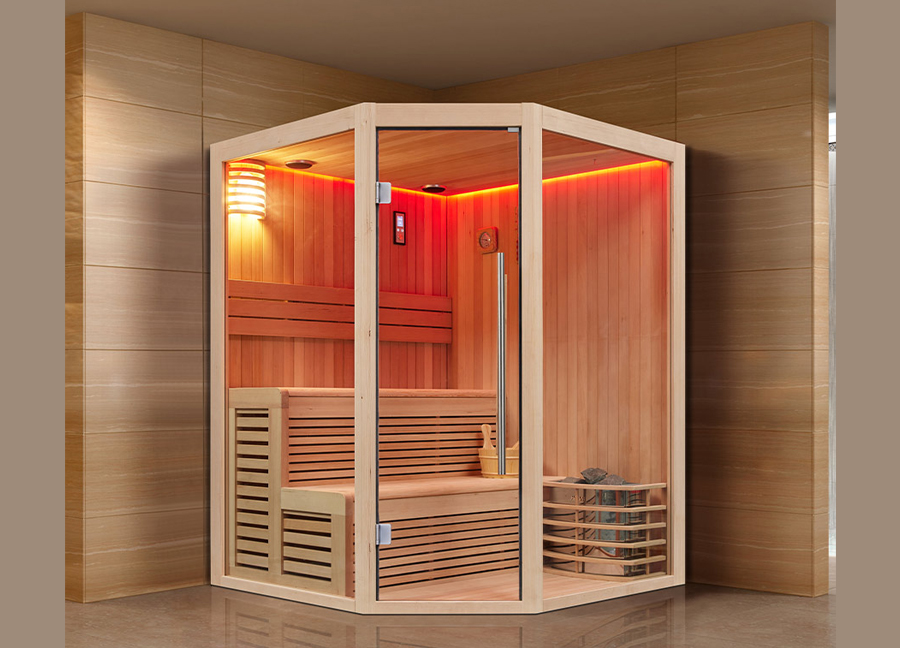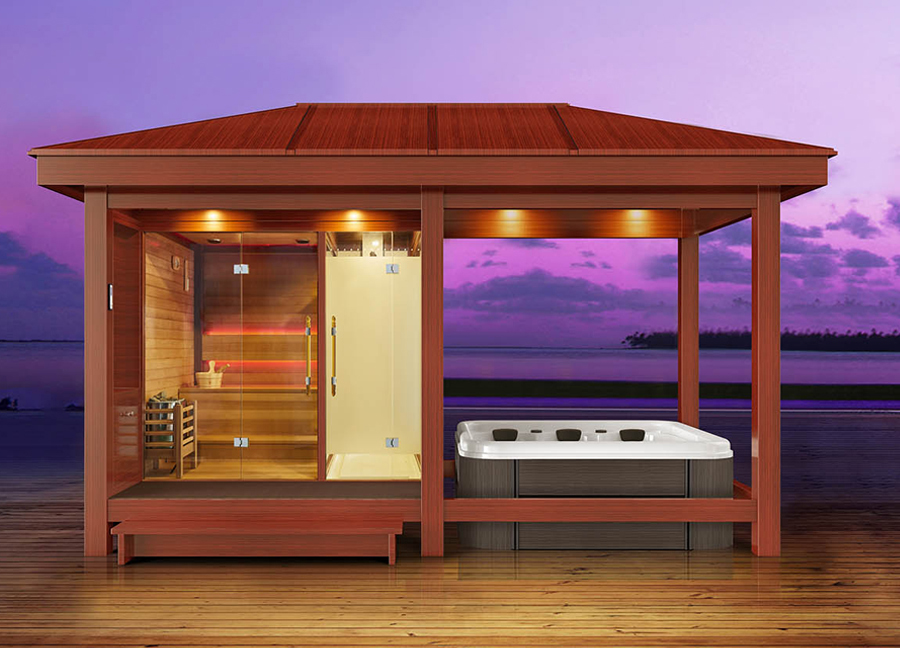Among home wellness equipment, a "swim spa pool" combines exercise and relaxation with hydrotherapy. Due to its convenient footprint, comprehensive functionality, and year-round usability, it's becoming increasingly popular with families, fitness centers, and wellness centers.
A key issue with long-term swim spa pool use is water quality maintenance and management. One of the most critical and frequently asked questions is, "How often do I need to drain my swim spa pool?"
This article will scientifically analyze this issue from multiple perspectives, providing users with a comprehensive and professional understanding of "swim spa pool water management."
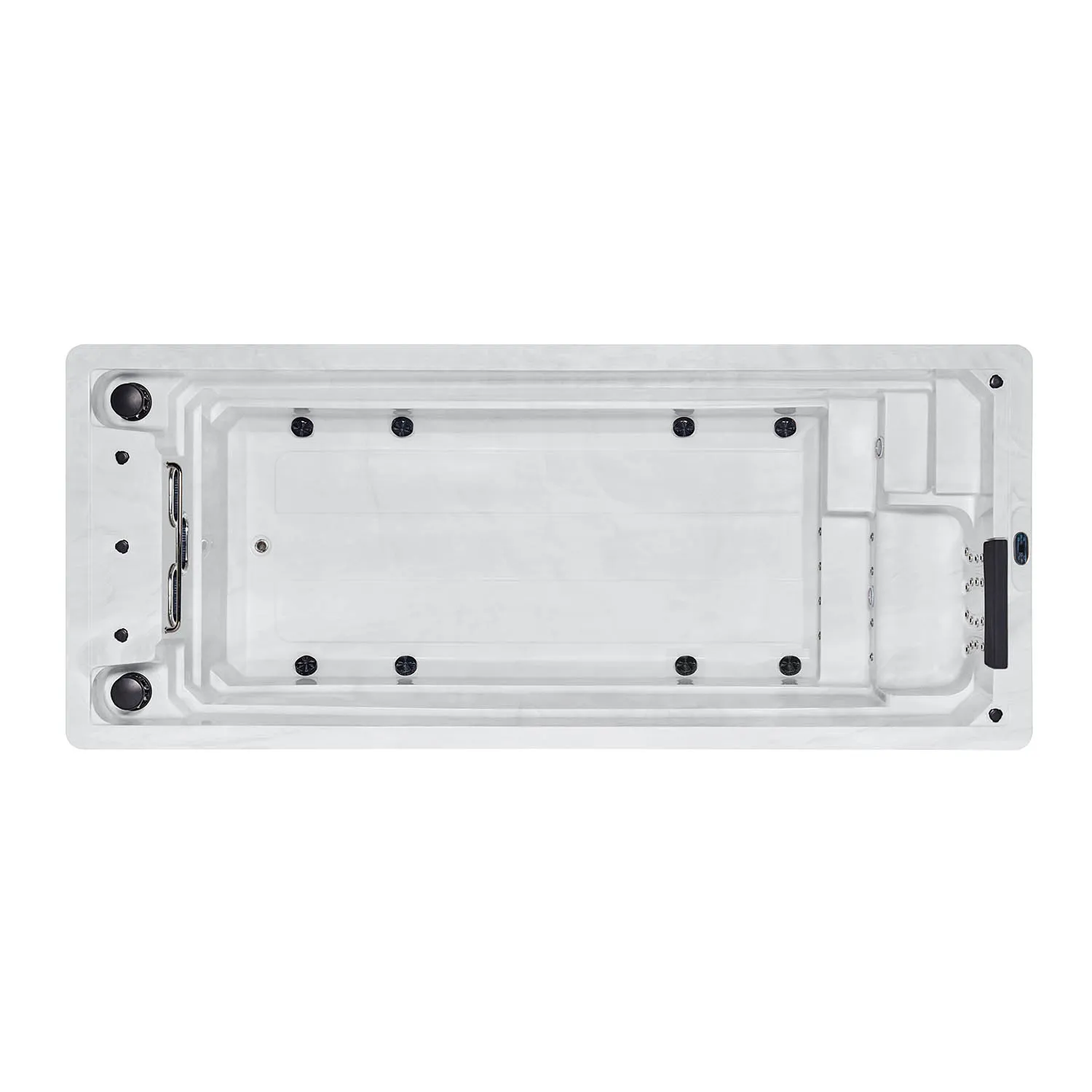
What is a swim spa pool? Why does it need to be drained regularly?
A "swim spa pool" is a hybrid pool that combines swimming and hydrotherapy massage. It typically features a constant temperature system, a high-current pump, hydrotherapy nozzles, and filtration and disinfection systems. It can provide simulated swimming, water resistance training, and bubble massage in a confined space.
Key features include:
· Water is used in a closed, year-round circulation system;
· The water temperature is maintained at approximately 30-36°C, suitable for year-round use;
· Frequent human-machine interaction and high human contact with the water;
· The filtration system operates continuously, but it cannot replace draining and cleaning.
Thus, although swim spa pools offer continuous purification and automatic sterilization, water quality will gradually deteriorate over time, with the flow of people, and external contamination. Failure to drain and clean the pool regularly will lead to water quality problems, equipment damage, and even harm the health of users.
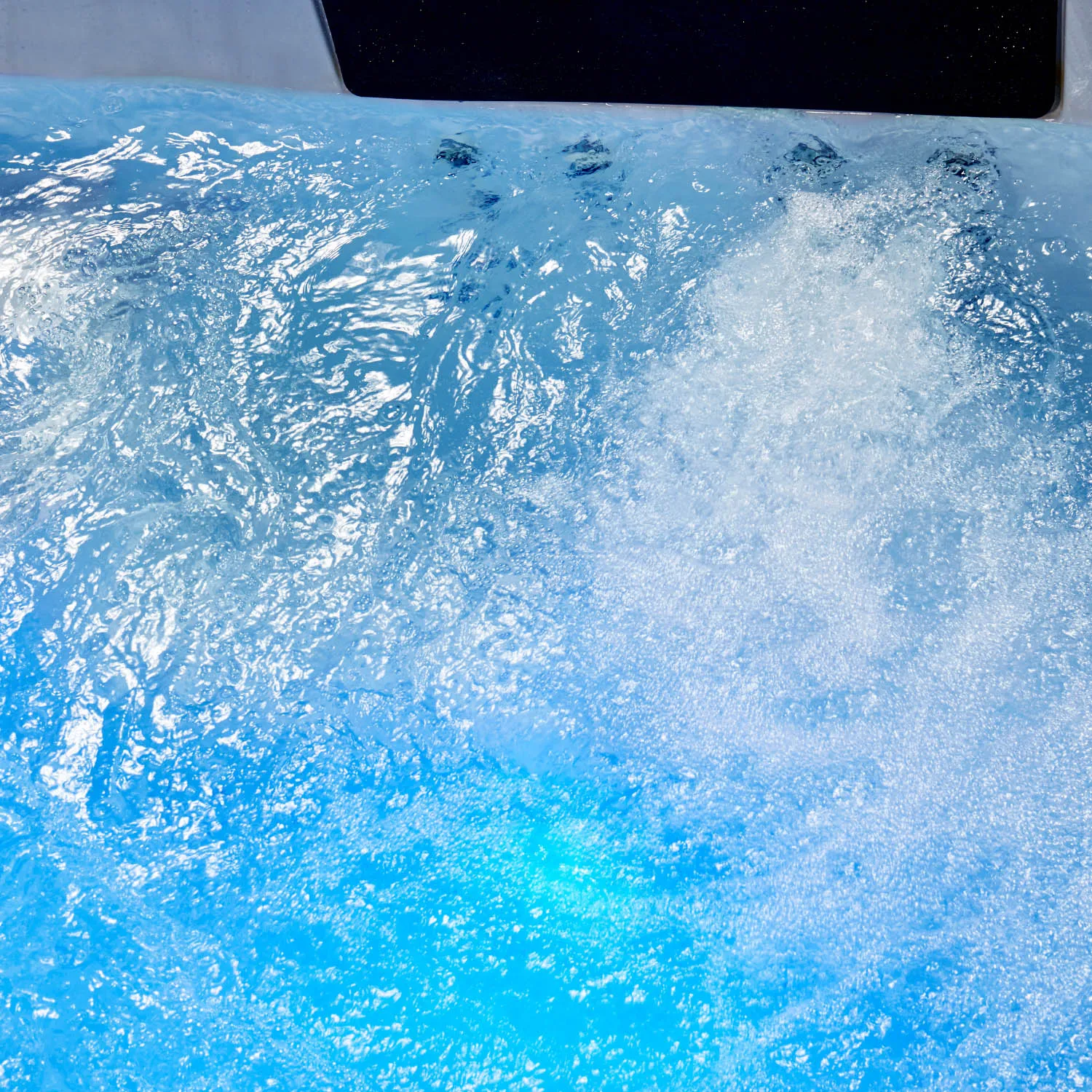
Causes of Water Deterioration: Why Shouldn't Swim Spa Pools Be Left Undrained for Long Term?
To understand why swim spa pools must be drained regularly, we must first understand the mechanisms by which water pollution accumulates.
1. Organic Matter Accumulation
During swimming or spa treatments, sweat, sebum, urea, cosmetics, sunscreen, and other substances enter the water. These organic impurities react with disinfectants in the water to produce harmful byproducts such as chloramines and trihalomethanes.
2. Microbial Growth
Although filtration and disinfection systems can inhibit bacterial growth, Legionella, E. coli, and Pseudomonas aeruginosa may still appear in high-temperature, nutrient-rich environments if water is not replaced promptly, potentially leading to dermatitis, conjunctivitis, or respiratory illnesses.
3. Water Hardness and pH Changes
Calcium and magnesium ions in water are more susceptible to scaling at high temperatures. Furthermore, with evaporation and water replenishment, the total dissolved solids (TDS) content in the water gradually increases. Excessively high TDS levels can cause:
· Heater scaling;
· Nozzle clogging;
· Reduced sterilization effectiveness;
· Turbidity and a greasy appearance in the water.
4. Chemical Disturbance
Prolonged addition of chlorine, bromine, or other chemicals can lead to chemical overload, disrupting the water's balance and causing irritation to the skin, eyes, and respiratory tract, as well as shortening the life of the equipment.
In summary, filtration and disinfection alone cannot maintain ideal water quality over the long term. Periodic draining of the swim spa pool is essential to maintain water quality and equipment performance.
Comparison table of the main causes of swim spa pool water deterioration
Sources of pollution | Symptoms | Potential Hazards | Solutions |
| Sweat, oil, organic matter | Water becomes slippery, foamy, and has a strong odor | Chloramine byproduct accumulation, respiratory irritation, skin irritation | Drain and replace the water, strengthen filtration, and shower before use |
| Microbial growth | Water becomes turbid and causes mucus growth | Skin diseases, eye problems, respiratory infections | Enhance disinfection, drain the water regularly, and maintain the filtration system. |
| Scale and mineral accumulation | Device scaling, slow heating, and nozzle clogs | Equipment damage, increased energy consumption | Use a water softener, add descaling agents, and drain the water regularly |
| Chemical load accumulation | Imbalanced water quality, increased pungent odor, and abnormal foaming | Disinfection failure, skin allergies, eye irritation | Control the amount of chemicals added, test pH and TDS, and completely replace the water if necessary |
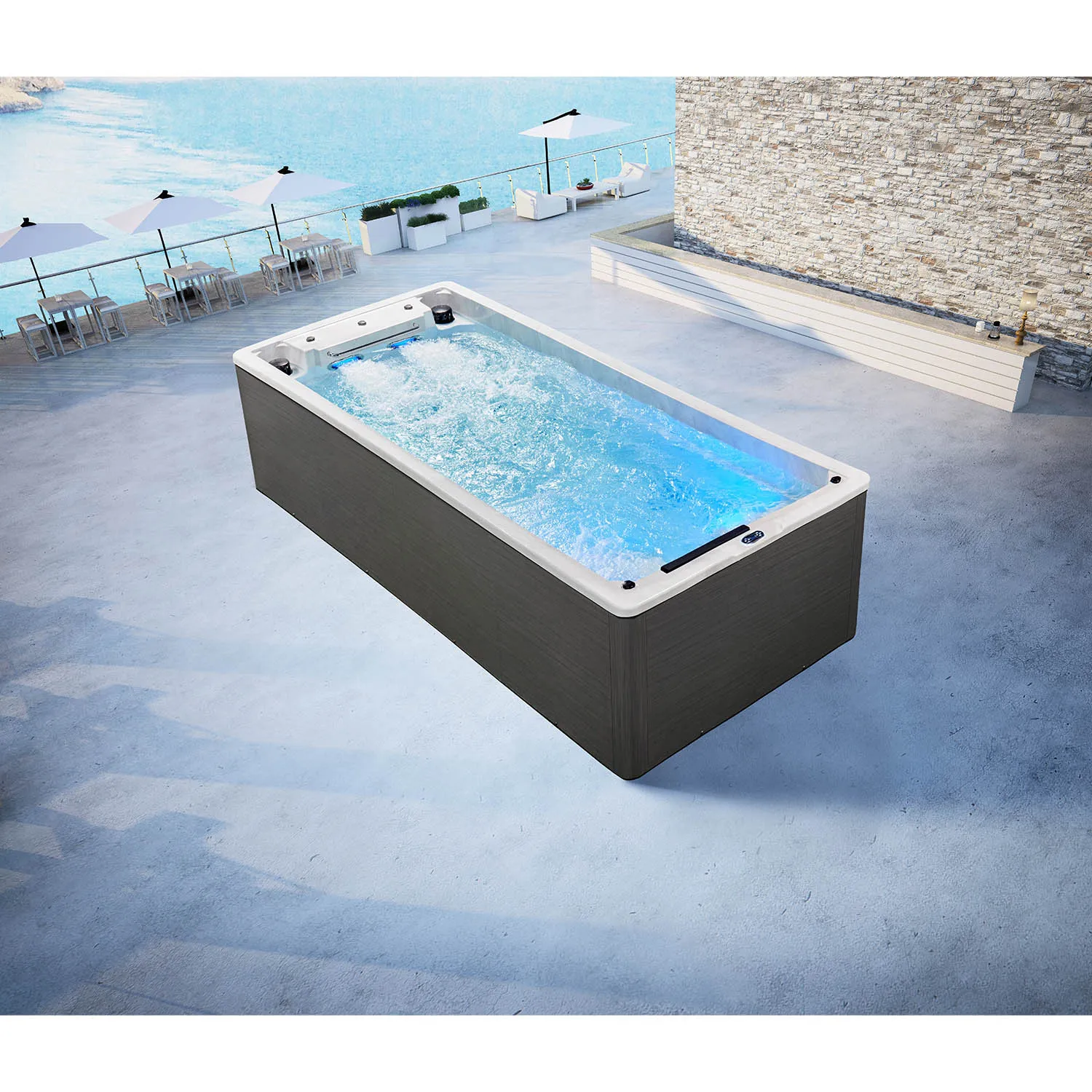
How often should a swim spa pool be drained? What are the influencing factors?
"Draining frequency" isn't a one-size-fits-all standard; it depends on the specific situation. Generally, professionals recommend draining and cleaning the pool every three to four months. However, the specific frequency is affected by the following factors:
1. Frequency of use
· Daily use for more than one hour, or shared by multiple users: draining every two to three months is recommended.
· Use two to three times a week, less than half an hour each time: draining can be extended to four to five months.
· Occasional use (one to two times a month): draining can be extended to six months depending on water quality.
2. Number of users
·Single-user use results in less water pollution.
·Shared use by multiple users or commercial venues requires more frequent draining. It is recommended that water quality be tested monthly, with a maximum of three months.
3. Maintenance and management level
· Regular dosing, pH testing, and filter cleaning can extend the water's lifespan.
· Lack of maintenance experience or equipment: draining the pool strictly every three months is recommended to minimize risks.
4. Regional Water Quality and Environment
· Regions with high water hardness (such as those in the north) or high mineral content in the water, which can easily lead to scale accumulation, require more frequent draining.
· Areas with high dust content, abundant vegetation, or frequent leaf fall (such as courtyard-style outdoor pools) require more frequent cleaning and shorter emptying cycles.
5. User Health
· Frequent use by patients with skin conditions, children, or the elderly should increase draining frequency to prevent cross-infection.
· General Recommendation: Home-use private pools should be completely drained every three months. This should be reduced to approximately two months for frequent use or high user rates.
Swim Spa Pool Draining and Maintenance Recommendations
| Classification dimension | Specific Situations | Recommended draining frequency | Notes/Recommended Measures |
| Frequency of use | Daily use exceeding one hour, frequent use, or high-intensity training | Every 2 months | Water contamination is rapid; draining intervals should be shortened. Weekly water quality testing is recommended |
| Use 2-3 times per week, approximately half an hour each time | Every 3-4 months | For normal household use, regular dosing and filter cleaning are recommended | |
| Occasional use (1-2 times per month) | Every 5-6 months (depending on water quality) | The draining interval can be extended, but regular water quality testing and disinfectant replenishment are still necessary | |
| Number of users | Single-person use | Every 3-4 months | For low-pollution sources, draining intervals can be appropriately extended |
| Multiple-person use, multiple-person household or commercial space | Every 1-2 months | Monthly water quality testing is recommended, and draining more frequently is recommended to prevent cross-infection | |
| Maintenance and management level | Experienced, regularly disinfects, tests, and changes dressings | Every 3-4 months | Maintaining good water quality can extend the water lifespan |
| Inexperienced, or lacks routine maintenance | Every 1-2 months | It is recommended to use smart monitoring devices to assist with management, and have professional personnel perform regular inspections | |
| Regional water quality environment | Hard water areas (northern areas, high levels of alkaline water), outdoor pools (with lots of fallen leaves) | Every 2-3 months | For scale accumulation, frequent draining is recommended, and a water softener or anti-scaling agent is recommended |
| User's physical condition | Children, elderly, or people with skin conditions | Every 2 months | Improve hygiene standards to reduce the risk of bacterial growth |
Swim Spa Pool: What are the potential consequences of not draining a pool promptly?
If a swim spa pool is left undrained for an extended period, the following problems may occur:
1. Deterioration of Water Quality
Water turbidity, darkening, odor, foam accumulation, and increased pungent odor indicate a serious imbalance in water quality.
2. Skin and Respiratory Irritation
Increased concentrations of chloramines and byproducts in water may cause skin allergies, eye redness, and respiratory discomfort.
3. Equipment Damage
Heating pipes, filters, pumps, nozzles, and other equipment are more susceptible to clogging or burning due to scale buildup, increasing maintenance costs.
4. Loss of Bactericidal Effectiveness
Disinfectants lose their effectiveness against excessive organic matter, allowing bacteria to grow and potentially leading to infectious skin or eye infections.
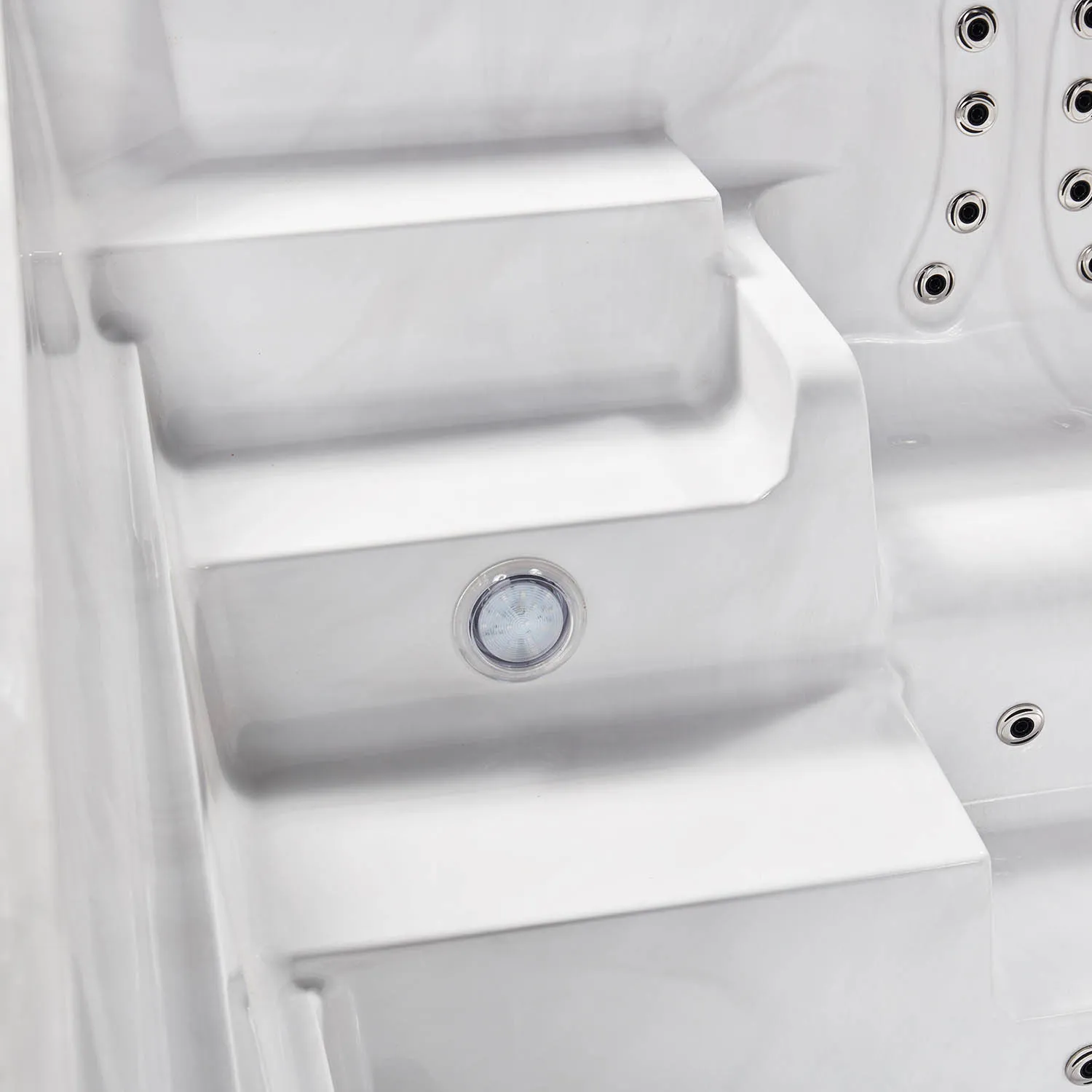
How to properly drain a swim spa?
1. Turn off the power
For safety reasons, always disconnect the main power supply before performing any cleaning or draining operations to prevent electric shock or damage to the equipment during operation.
2. Use a Drain Valve or Dedicated Drain Pump
Most swim spas have a drain valve at the bottom, or a dedicated submersible pump can be used to expedite draining.
·If outdoor drainage is inconvenient, drain the pool to a sewer using a hose.
·Be careful not to discharge water containing chemical agents directly into natural water sources.
3. Clean the Interior and Nozzles
After draining, use a sponge, soft brush, and non-abrasive detergent to scrub the pool walls, seat, and nozzle area to remove any stains, sediment, and buildup.
4. Clean the Filter and Water Inlet
· Remove the filter and rinse with water or use a dedicated filter cleaning solution.
· Check the water inlet and outlet for any blockages.
5. Inspect and Maintain the Equipment
While draining, check the operation of the pump, heater, and disinfection system. Replace or descale the filter if necessary.
6. Refilling and Adjusting the Water
· After filling with new water, check the pH (recommended 7.2-7.8), total alkalinity, and disinfectant concentration.
· Run the spa system for 10-15 minutes to check for proper function.
· Adjust the water temperature to the appropriate range (recommended 32-36°C).
Brief table of procedures for draining a swim spa pool
Procedure | Details | Precautions |
| Power off | Disconnect the main power switch to prevent electric shock or damage during operation | Ensure all power is turned off during operation |
| Drainage | Open the drain valve or use a dedicated water pump to drain the water | Avoid discharging chemical water directly into natural water bodies |
| Internal cleaning | Clean the pool walls, nozzles, and seat with a neutral detergent and a soft brush | Do not use highly acidic or alkaline corrosive agents |
| Filter cleaning | Remove the filter and rinse or use a filter cleaning solution | Replace the filter element regularly to ensure filtration efficiency |
| Equipment inspection | Check the pump, heater, and spa nozzles for proper operation | Descale or replace the filter element if scale buildup is severe |
| Water filling and commissioning | After adding new water, test the pH, total alkalinity, and disinfectant concentration. Run the spa to check that the system is functioning properly | The recommended water temperature for initial filling is no more than 36°C |
Swim spa pool: Daily maintenance recommendations during use
To extend the life of your swim spa pool and reduce draining frequency, we recommend the following:
· Test the water quality weekly (using test strips or an electronic tester);
· Replenish disinfectant (such as sodium hypochlorite, bromine tablets, ozone, etc.) promptly;
· Shower before use to prevent human contamination from entering the water;
· Clean the filter every two weeks;
· Keep the water surface membrane clean and replace it regularly;
· Run the purification system for 15 minutes after use to help eliminate bacteria and precipitate impurities.
Swim Spa Daily Maintenance Tips
Maintenance items | Frequency Recommendations | Functions |
| Test water quality (pH, residual chlorine) | Once a week | Maintains water pH balance and sterilization capacity |
| Add disinfectant | After each use or every 2-3 days | Maintains effective sterilization concentration, inhibiting bacterial growth |
| Clean filter | Once every 2 weeks | Maintains filtration efficiency and extends filter life |
Rinse and re-enter the pool | Before each use | Reduces the introduction of organic matter such as sweat and cosmetics into the water |
| Run the spa system cycle | Run for 15 minutes after each use | Assists in evenly distributing chemicals and promoting water purification |
| Drain, clean, and refill | Every 2-3 months (regular) | Throughly cleans water and equipment, preventing long-term contamination accumulation |
Can I Visit Your Factory Before Placing a Large Order?
Yes! We welcome all customers to visit our factory in Foshan, China. You’ll see the production line in action, including how we make outdoor spas, massage bathtubs, and gazebos. We can also arrange sample viewing and real-time product demonstrations. For clients who cannot visit in person, we offer video tours and product testing reports.

